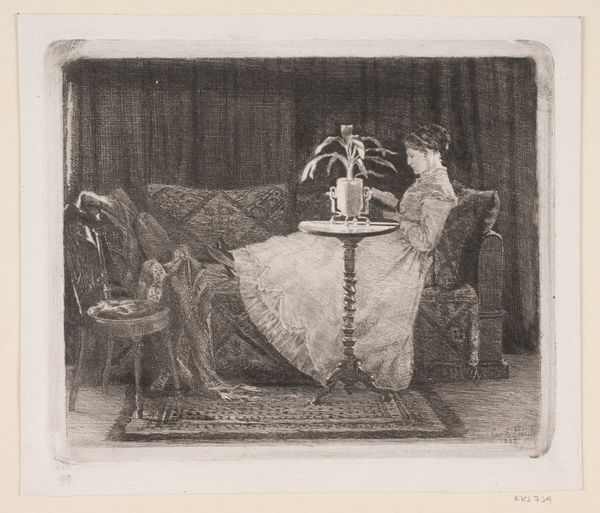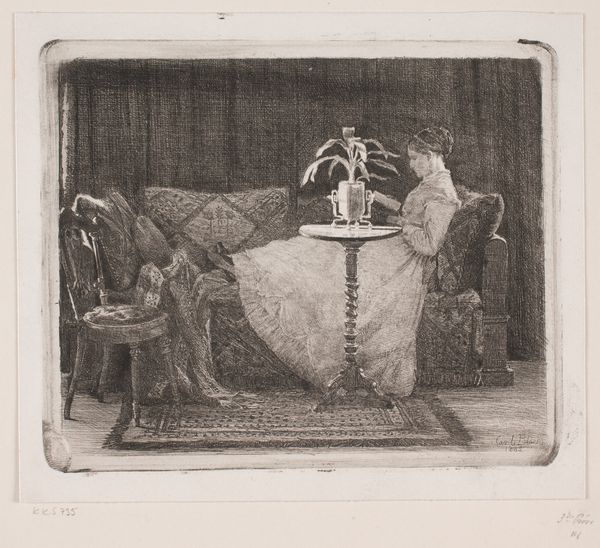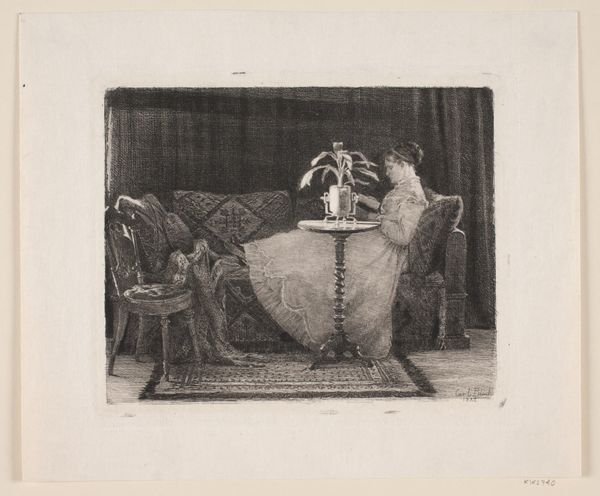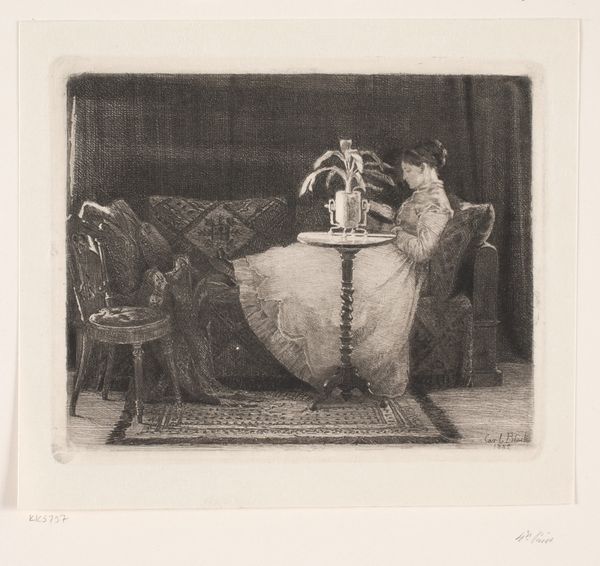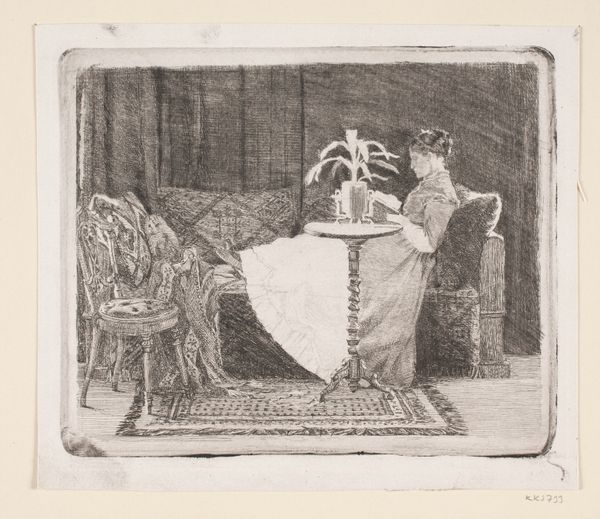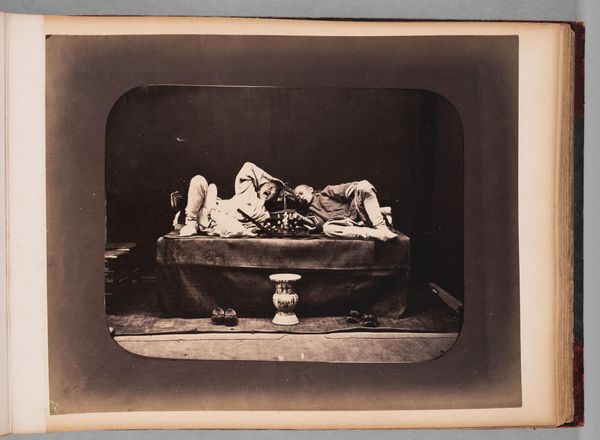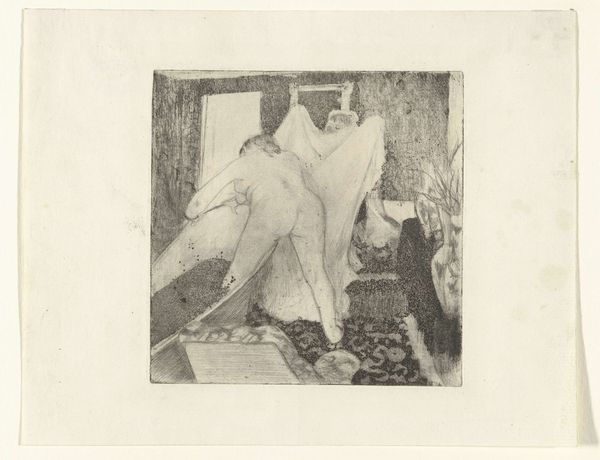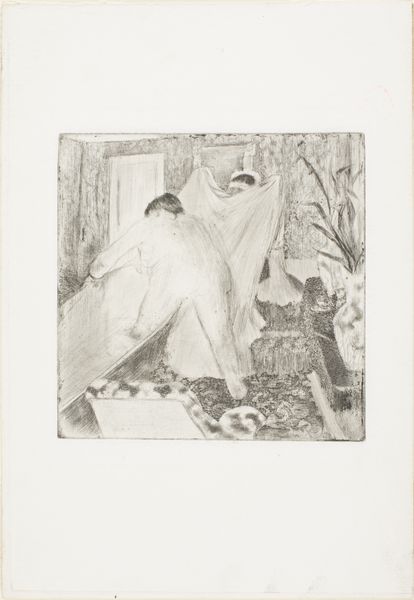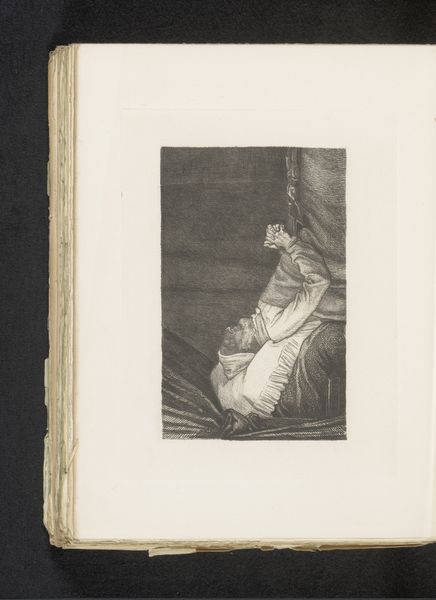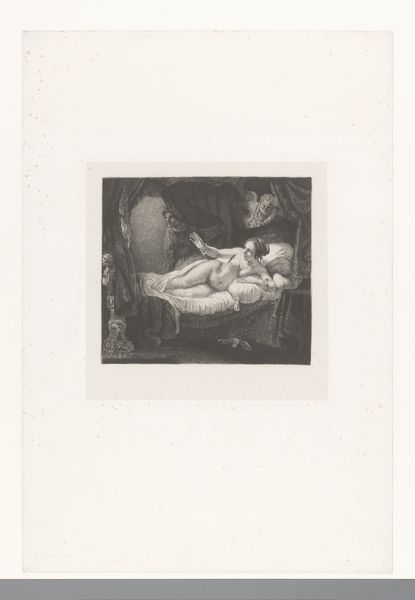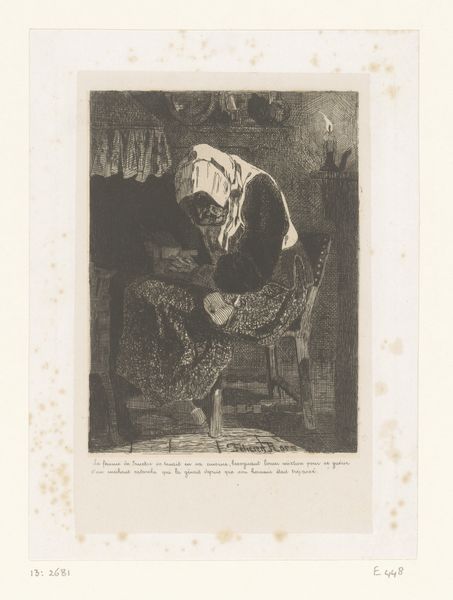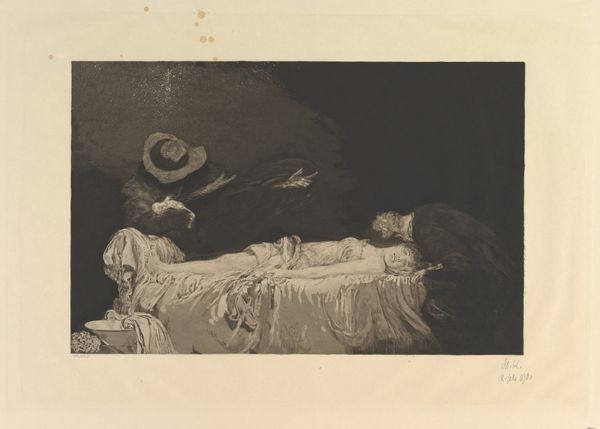
print, etching
#
portrait
# print
#
etching
#
19th century
#
genre-painting
#
realism
Dimensions: 130 mm (height) x 159 mm (width) (plademaal)
Editor: Carl Bloch's 1882 etching, "Læsende dame" – or "Reading Lady" – shows a woman absorbed in a book. There's something so intimate about the scene, like we're catching her in a private moment. What symbolic meanings might be hiding in plain sight? Curator: This image, in its quiet realism, speaks volumes about the role of women and literacy in the late 19th century. The act of reading itself, often depicted, becomes a potent symbol of intellectual freedom and self-development, but note how enclosed she is. Consider also, what do you make of the placement of the plant between us and her? Editor: It does seem to create a bit of a barrier. I guess I assumed it was just a decorative object? Curator: Perhaps, but symbols are rarely 'just' anything. Plants, in art, often signify growth, life, domesticity, but also confinement, if they are potted or pruned too severely. This, coupled with the subdued tones and her enclosed space, does the image hint at the limitations still imposed on women despite growing literacy? The domestic sphere, beautiful and comforting, but a sphere nonetheless? Editor: So, the image isn't simply celebrating a woman reading, but also quietly commenting on the context of her life and her limitations, even within that comfortable scene. The barriers, the room itself as womb and tomb... Curator: Precisely! Bloch provides a window into a world undergoing transformation, using symbols accessible to his audience while subtly challenging them to reflect on what they truly represent. Editor: I’ll definitely look at other depictions of women reading with fresh eyes now, and notice all the hidden cues. Thanks so much for highlighting those symbolic tensions! Curator: My pleasure. Visual culture surrounds us with deliberate meaning.
Comments
No comments
Be the first to comment and join the conversation on the ultimate creative platform.
